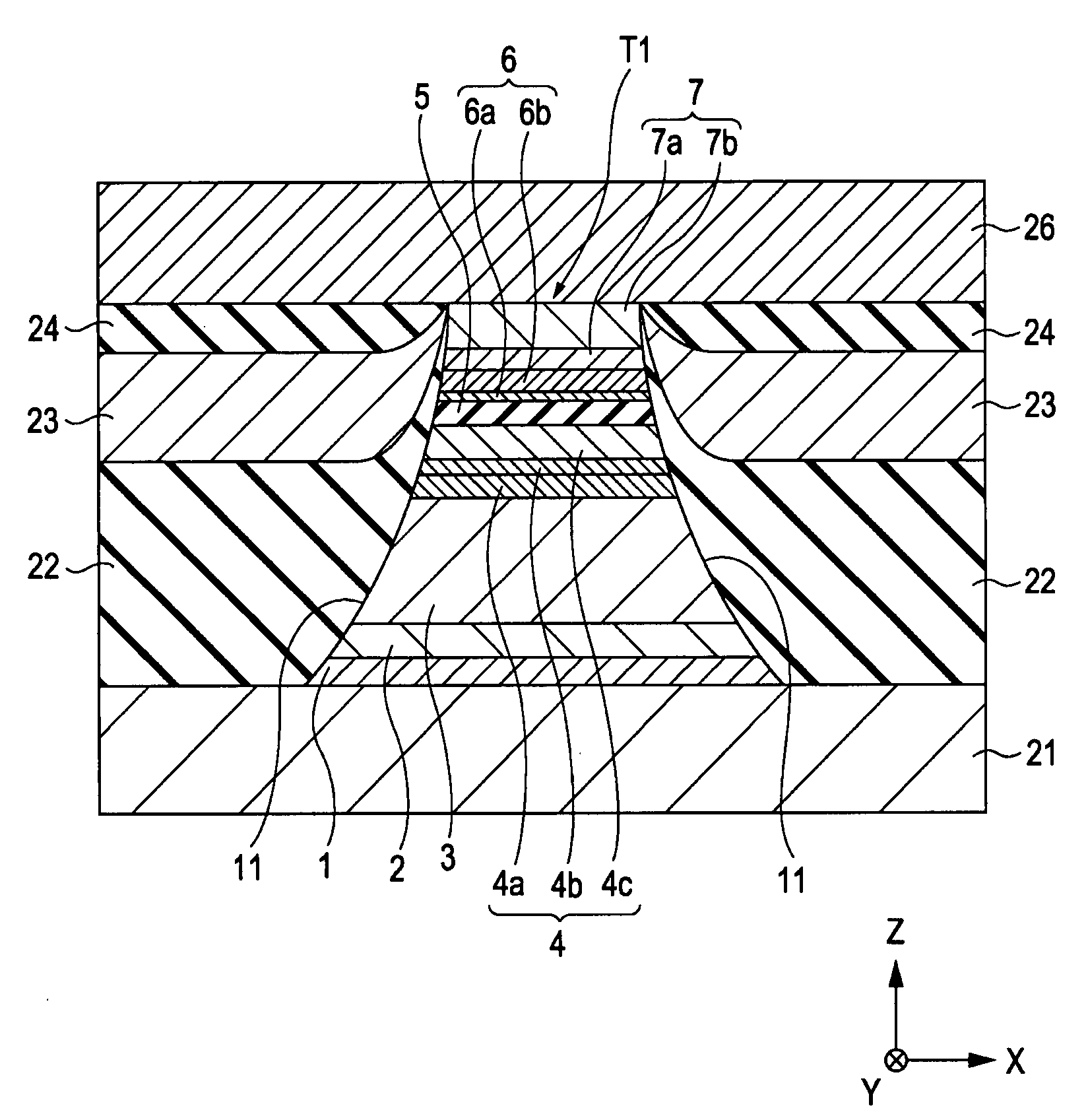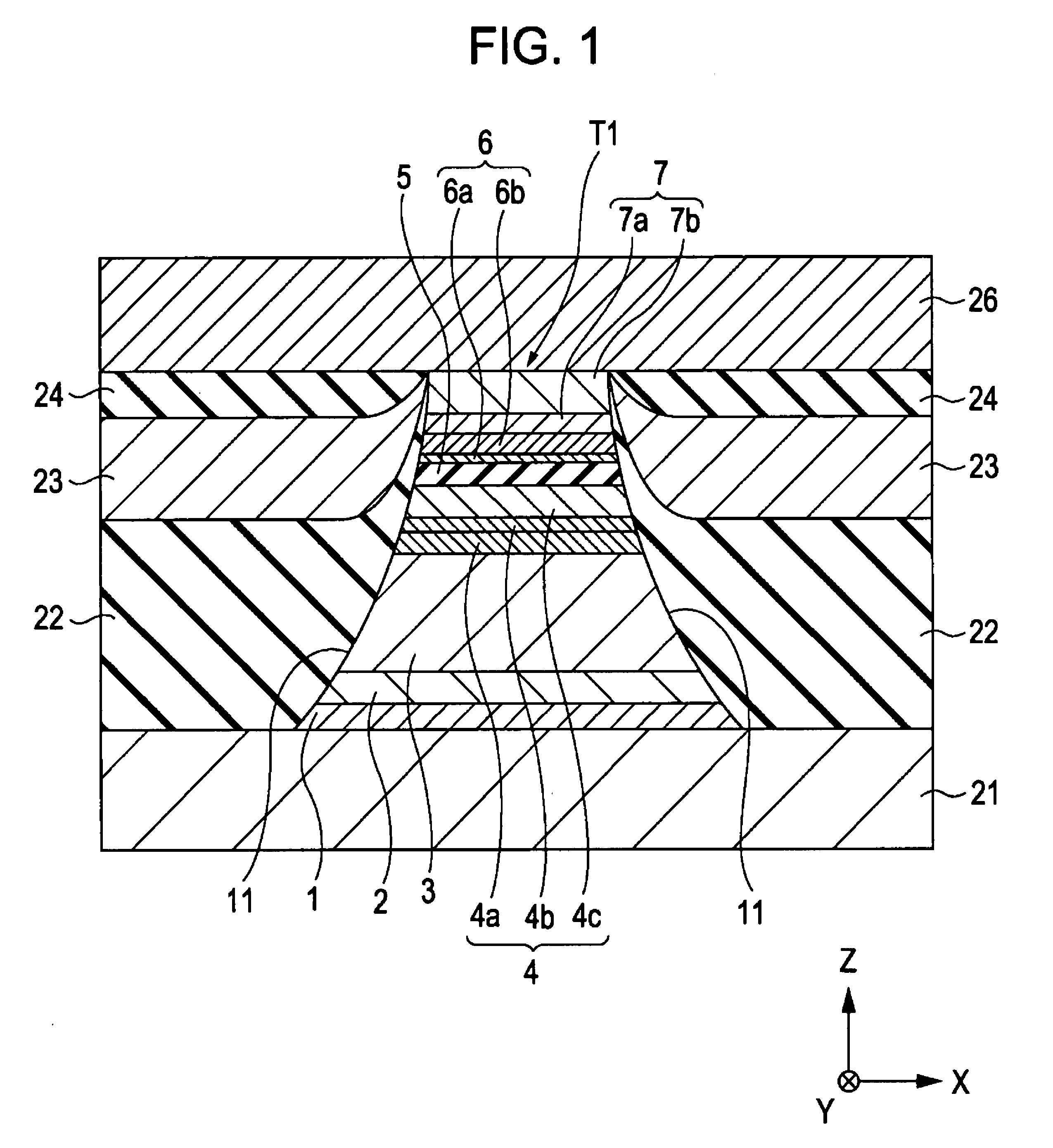Tunneling magnetic sensor including free magnetic layer and magnesium protective layer disposed thereon
a magnetic sensor and free magnetic technology, applied in the field of magnetic sensors, can solve the problems of low stability of reproducing heads, low magnetostric ineffective adjustment of free magnetic layers to achieve low magnetostriction to achieve large changes in reluctance, so as to prevent the magnetostriction of free magnetic layers, the effect of manufacturing appropriately and readily
- Summary
- Abstract
- Description
- Claims
- Application Information
AI Technical Summary
Benefits of technology
Problems solved by technology
Method used
Image
Examples
examples
[0095]Tunneling magnetic sensors were prepared so as to have configurations similar to the configuration of the tunneling magnetic sensor shown in FIG. 1.
[0096]In Example 1, a tunneling magnetic sensor including an insulating barrier layer 5 made of Al—O was prepared as described below.
[0097]The following layers were deposited on a lower shield layer 21 in this order: a base layer 1, made of Ta, having an average thickness of about 80 Å; a seed layer 2, made of a Ni—Fe—Cr alloy, having an average thickness of about 50 Å; an antiferromagnetic layer 3, made of an Ir—Mn alloy, having an average thickness of about 70 Å; a pinned magnetic layer 4 including a first pinned magnetic sublayer 4a which contained about 70 atomic percent Co and 30 atomic percent Fe and which had an average thickness of about 14 Å, a non-magnetic intermediate sublayer 4b which was made of Ru and which had an average thickness of about 9.1 Å, and a second pinned magnetic sublayer 4c which contained about 60 atomi...
PUM
| Property | Measurement | Unit |
|---|---|---|
| temperature | aaaaa | aaaaa |
| temperature | aaaaa | aaaaa |
| temperature | aaaaa | aaaaa |
Abstract
Description
Claims
Application Information
 Login to View More
Login to View More - R&D
- Intellectual Property
- Life Sciences
- Materials
- Tech Scout
- Unparalleled Data Quality
- Higher Quality Content
- 60% Fewer Hallucinations
Browse by: Latest US Patents, China's latest patents, Technical Efficacy Thesaurus, Application Domain, Technology Topic, Popular Technical Reports.
© 2025 PatSnap. All rights reserved.Legal|Privacy policy|Modern Slavery Act Transparency Statement|Sitemap|About US| Contact US: help@patsnap.com



